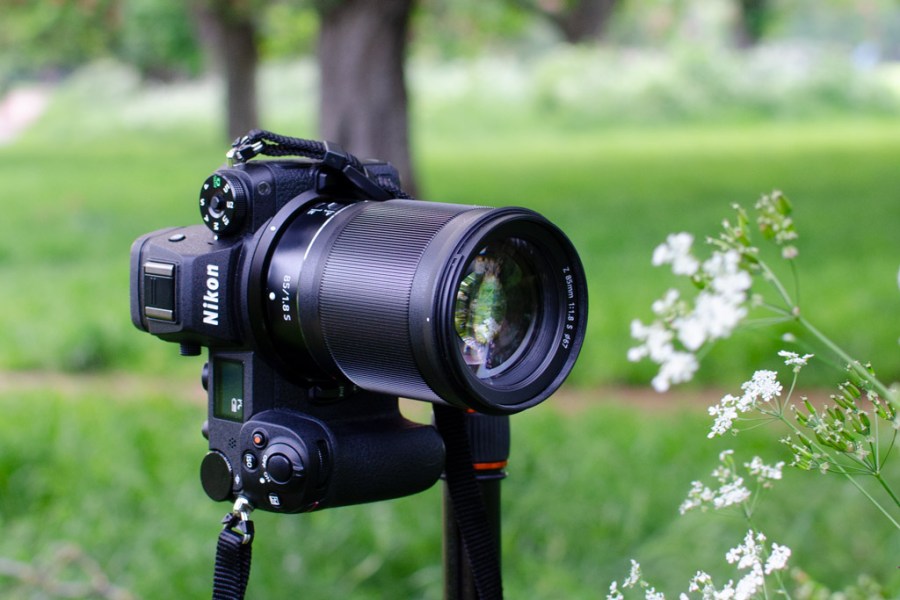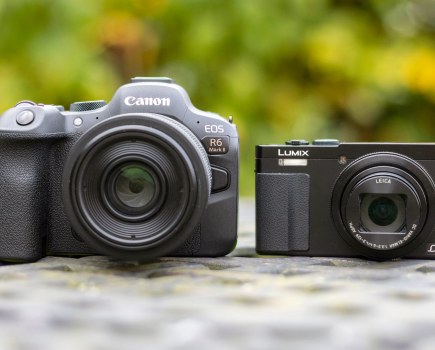Should I switch to mirrorless? This is a question that is sure to come up if you are thinking about changing your camera today. The best mirrorless cameras offer in-body image stabilisation, a lightweight body, silent shutter, and the list goes on.
But is it worth upgrading when you can get a very capable used DSLR for half the price?
I bought my trusty steed, the Nikon D7000, almost a decade ago. It was the first interchangeable lens camera I owned, and it served me well shooting portraits, street photography, products and macro. It’s still a good performer, but as I have had the chance to use some higher-spec cameras, I knew an upgrade was inevitable.
The web is awash with reviews and articles pro and contra. So I decided to make a list of what I wanted from my camera, set my budget, and started comparing the alternatives on a spreadsheet. My main criteria were resolution and sensor size. Cropping into an image with 16MP doesn’t leave you with a lot of wiggle room. I wanted a higher resolution camera, with a full-frame sensor that has a better dynamic range, allowing me to crop more generously and preserve more details whilst shooting in low light.
Going for a new camera, I knew that to switch all my gear would be quite an investment, so I have been comparing second-hand prices. I was debating between the Nikon D850, which sold around $1600 / £1200 at the time or the Canon EOS 5D Mark IV for $1000/£1000 second-hand. But I was curious what more could a mirrorless camera offer if I expanded my budget. I landed on the Nikon Z7 II, which only two years ago sat in the $1500/£1,700-$2000/£2,300 bracket but today sells for around $1200/£1200 – $1500/£1600 used.
So what made me choose it against a cheaper, used full-frame DSLR? Read on and find out.
My favourite things about switching to the Nikon Z7 II
Weight, size and build
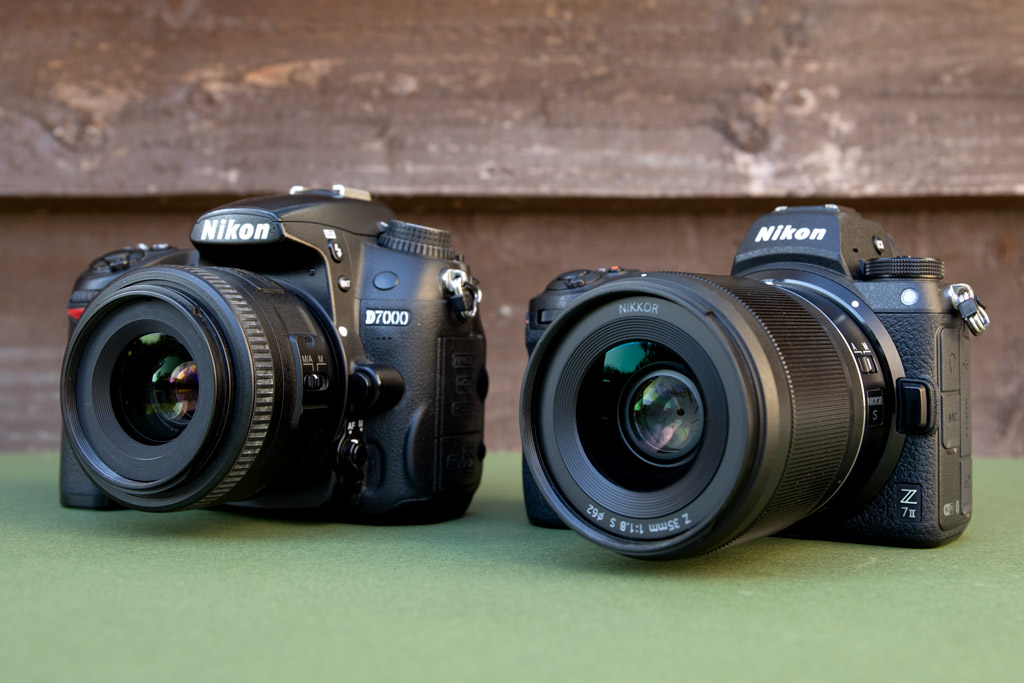
Size and weight used to be one massive advantage of mirrorless over older DSLRs. However, in my case, the Z7 II at 704 g, and 134 x 100.5 x 69.5 mm closely matches the D7000 at 780g, and 132 x 105 x 77 mm measurements. But given the fact that my gear didn’t get heavier and I gained more resolution as well as a bunch of other great specs, it was worthwhile for me. Another aspect here was the familiar layout of the control buttons and menu.
Shooting hand-held
I never understood how can other photographers could claim to be shooting at 1/30 second or slower, hand-held. I tried all the tricks, keeping my arms and elbows close to my body, and paying particular attention to how I breathe, with no success. I came to know myself and had to admit that shutter speeds below 1/60 is not something I should attempt using. At least, that was the case with my old camera.
Now with the built-in 5-axis image stabilisation of the Z7 II paired with native Z-mount lenses that also feature vibration reduction, blur from camera shake is not so much of an issue. It is also a welcome feature while shooting video.
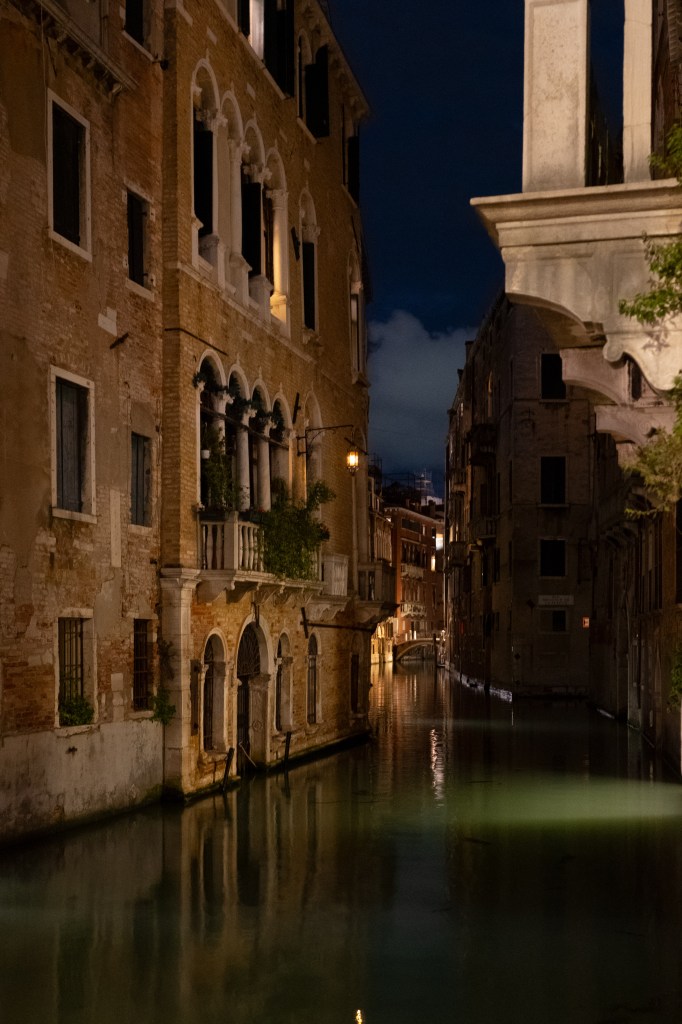
Autofocus
When shooting portraits, you always aim to focus on the eyes, right? To get an appealing shallow depth-of-field behind the subject, I like to shoot wide open at f/1.8. But it gets trickier to get the focus right on the eyes. Now, with my old D7000, I would use centre-point autofocus and recompose, but this is limiting with regards to subject movement. I often ended up focusing on the eye further away from the camera, or more annoyingly, missing the focus altogether as my subject moved.

Modern mirrorless tech meant more accurate Face/Eye detection autofocus and accurate focus tracking while selecting from 493 focus points instead of 39.
Another absolute marvel for me is focus peaking. I love to use this option when shooting in low light or when there is a very wide scenery in front of me. Also, it is a great way to quickly determine areas in focus when creating a focus-stacked image for macro or product photography.

Live exposure preview
If you are really confident in your ability to shoot well-exposed images all the time, hats off to you. But even if I know how to read the histogram and set my exposure values, there’s an undeniable ease to using live exposure preview. Seeing the changes as you make them speeds up the process considerably. For those who are worried about shooting with a strobe, the good news is you can turn off exposure simulation in the menu so you can see what’s in front of the camera in full brightness.
Dynamic range and ISO
The D7000 has a 10-stop dynamic range, but as for its ISO range, 100-6400 is far from good considering today’s standards. It also suffered from considerable grain anywhere above ISO 800. The Z7 II has a 14.5-stop dynamic range paired with a similarly impressive ISO range of 64-25,600 (expandable to ISO 32-102,400). I can recover details from shadows or push my ISO higher and still get a usable image. It makes shooting in low light completely different.
Lens choice
Now, the number of lenses available is normally considered a con against a mirrorless system switch, but I would argue with this. The native Nikon Z-mount lens choice is obviously limited, but it’s steadily growing. Third-party lenses are popping up from manufacturers like Samyang, Tamron, and Viltrox. Sigma also has some lenses in its contemporary line-up and plans to expand this. Affordable alternatives are available from TTArtisan, while Lensbaby also offers some options.

Of course, compared to the F-mount Nikon lenses you can pick up for as little as $200/£200, dedicated mirrorless options with bright apertures and decent optics are more expensive. But you can use Nikon’s FTZ or FTZII ($246/£249) adapter to mount your old lenses. Note that DX lenses will apply a crop, and you end up only utilising a smaller area of your sensor. However, if you want to gradually change your lenses, it is nice to be able to use your old ones, even if they’re cropped.
So as I see it, I have more options than a DSLR user, as essentially I can keep using my old lenses, as well as both F-mount and Z-mount optics. However, when I paired the Z7II with a native Z-mount lens, the optical quality and autofocus speed was astonishing. Nikon has released a really good range of full-frame Z-mount optics since the initial launch of its mirrorless line, and if you are on a more constrained budget third-party manufacturers also offer a variety of glass, that will
Wireless Connectivity
This is not something older cameras don’t offer, but something my D7000 lacked. Amongst other genres, I shoot self-portraiture, and with my old camera, I was tethering to a computer or setting the self-timer. Now with Nikon’s SnapBridge app, I can’t tell you how much easier it is to have my phone in my lap, see a live exposure preview, and be able to change and preview the exposure, a real game changer.
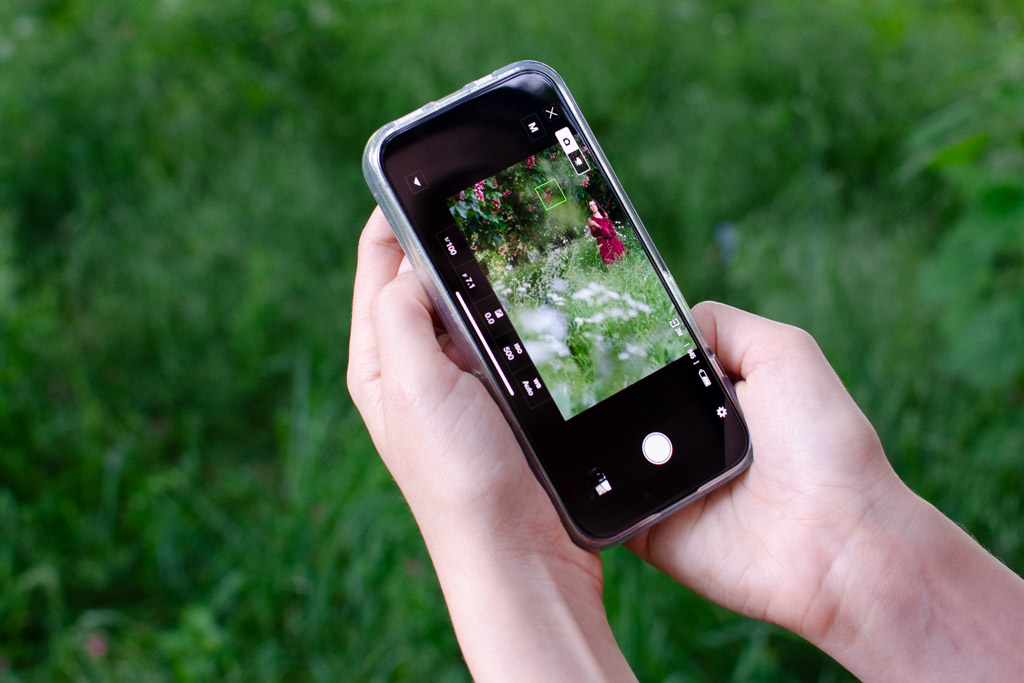
Final thoughts
It’s been a little over three months since I upgraded to the Nikon Z7 II, and I could not be happier with my choice. But I am positive I would have been similarly impressed if I went with any of my DSLR choices. An upgrade is an upgrade. Nevertheless, if my points above aren’t enough to convince you to switch, take into consideration that mirrorless technology is here to stay. Manufacturers are now focusing on the development of these cameras and lenses, rather than DSLRs. Buying a used DSLR halfway through its shutter life, just to upgrade it again in a few years, is not very economical. If you want to keep your gear longer and also don’t want to dish out a huge amount on your next upgrade, then going for mirrorless now is a good idea.
Are you contemplating making the switch, or maybe you are resolved on going for a DSLR? Let us know what made you choose one over the other.
Related reading:
- Best Nikon cameras – From budget to high-end models
- Nikon Z7 review – Still a worthy contender, and now a real bargain
- Nikon Z6III review – The best full-frame all-rounder yet?
Follow AP on Facebook, Instagram, YouTube and TikTok.

